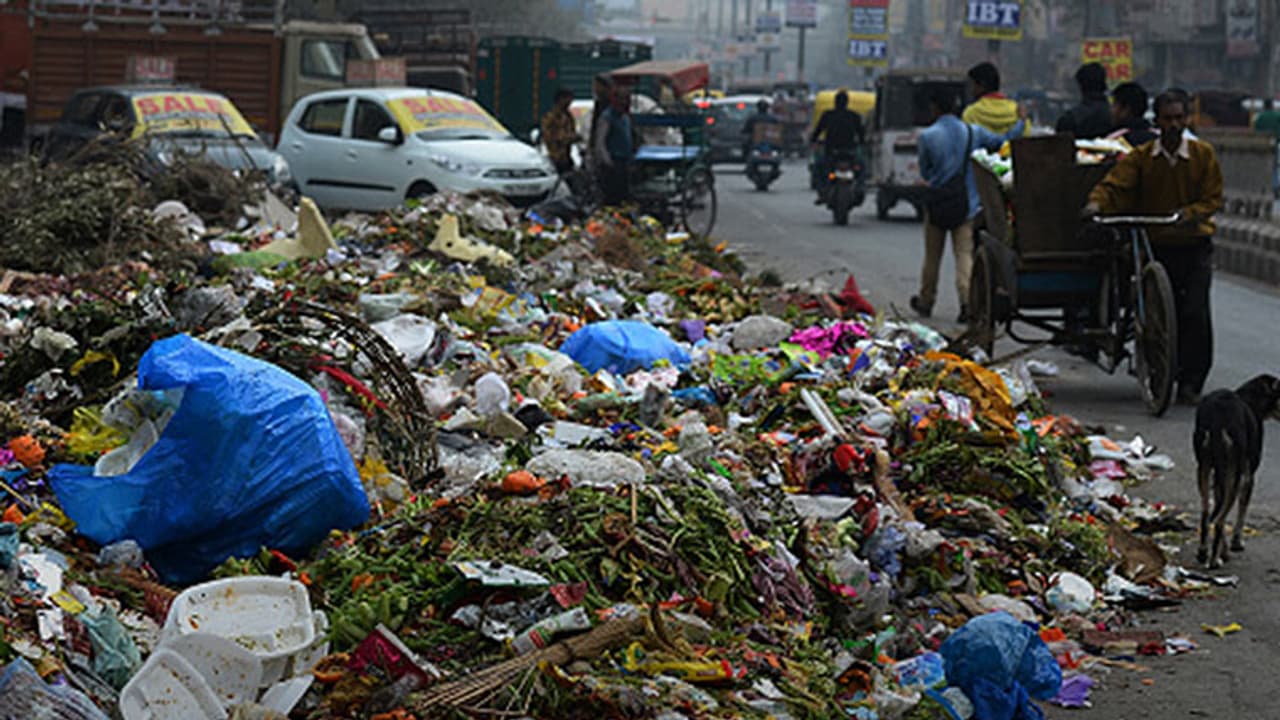Brand specialist Harish Bijoor undertook a 30-minute long walk through the lanes and streets of Indira Nagar on what he called a Garbage Walk Bijoor who tagged @CMofKarnataka in his tweets, in disgust calls Bengaluru the #GarbageUru (the garbage city) From position 7 in 2015, Bengaluru slipped to 38 in 2016 in the Swacch Bharat ranking of cities.
On Sunday morning, well-known brand specialist Harish Bijoor decided to show a mirror to fellow Bengalureans. He undertook a 30-minute long walk through the lanes and streets of Indira Nagar, one of the most posh areas of Bengaluru, on what he called a Garbage Walk. What he saw, he shot and kept tweeting, expressing his dismay and anguish at the sights and smells of his city.

“Not a minute passed without a photo-op,” said Harish Bijoor. “I shot 30 photographs in about 40 minutes and kept tweeting. Indira Nagar is an upper middle-class area in central Bengaluru. The fact that garbage was strewn all over the place, shows there is an attitudinal issue.”
For Bengaluru, that has the reputation of being home to a vibrant civil society, that raises its voice for the right issues, Bijoor's #GarbageWalk is proof that the city does not practise what it preaches.
Bijoor who tagged @CMofKarnataka in his tweets, in disgust calls Bengaluru the #GarbageUru (the garbage city). One of his photographs is of the garbage dump behind the iconic Leela Palace, which Bijoor sarcastically calls `The Garbage Fields of Bangalore'. Another one shows a garbage heap in front of a giant-size painting of Lord Hanuman.
Social activist and lawyer Premila Nesargi, who is a resident of Indira Nagar blames it on the proliferation of eateries and commercial establishments in the locality. “I have been living on 80 Feet Road, which is second to 100 Feet Road. Both are lined with restaurants and shops due to which, garbage has only doubled,'' says Nesargi. Not true, going by Bijoor's twitter album as it showed heaps of old school bags, for instance, dumped outside a posh gated community.
The Bengaluru Political Action Committee (BPAC) is a civic group that has taken the lead in issues relating to sanitation, traffic, restoration of lakes etc. Revathy Ashok, Member of BPAC says the black sheep need to be brought to book. “There needs to be awareness among people. Officials too are not serious about fining those who dump,” says Revathy.
Bengaluru, for quite some time, has struggled with its garbage problem. The city that is home to over 10 million people today is bursting at the seams, unable to handle the 4000 tonnes of garbage it produces daily.
For years, sending it landfill sites kept both the citizens and the truckers happy because with some 500 plus trucks carrying garbage out of the city, the trucker lobby earned a handsome amount. Till villagers around the landfill sites in Mavallipura and Mandur and the quarry in S Bingipura raised a stink in 2013-14.
``The concept of landfills is in any case, a very elitist way to handle garbage. Your trash is like your kid, you cannot outsource it to someone else to take care of it,'' says Bijoor.
The Bengaluru municipal corporation (BBMP) did try to sort out its mess asking households to segregate its waste, saying its 14000-odd employees would only pick up segregated waste. The problem was that while many Bengalureans fell in line, it was often mixed at collection points, making the effort go waste.
Ten garbage processing plants on the city outskirts now take care of Bengaluru's trash though citizen groups are still wary of the garbage mafia that profits from trucks ferrying the garbage as the contractors are paid for every kg of waste they transport. Segregation reduces the waste quantity.
Garbage remains Bengaluru's biggest problem and a financial drain as well. A report in The New Indian Express points out the city corporation spends more on garbage disposal than its municipal counterparts in Chennai and Hyderabad.
Hyderabad (625 sq km) spends ₹100 crore to dispose off 3800 tonnes of daily waste. Chennai (426 sq km) corporation spends ₹400 crore to take care of 6000 tonnes of waste. Bengaluru (800 sq km) spends ₹450 crore to dispose off 5000 tonnes.
With Prime Minister Narendra Modi's focus on waste to wealth, Bengaluru city needs to look at alternate ways to take care of its trash. City incharge minister KJ George has said Bengaluru could take a leaf out of Delhi's book. So far, twenty companies have evinced interest in setting up garbage-based power plants in Bengaluru, an effort that needs to be pushed soon.
From position 7 in 2015, Bengaluru slipped to 38 in 2016 in the Swacch Bharat ranking of cities. Harish Bijoor's photo gallery on twitter only shows the reasons why Bengaluru stinks.
